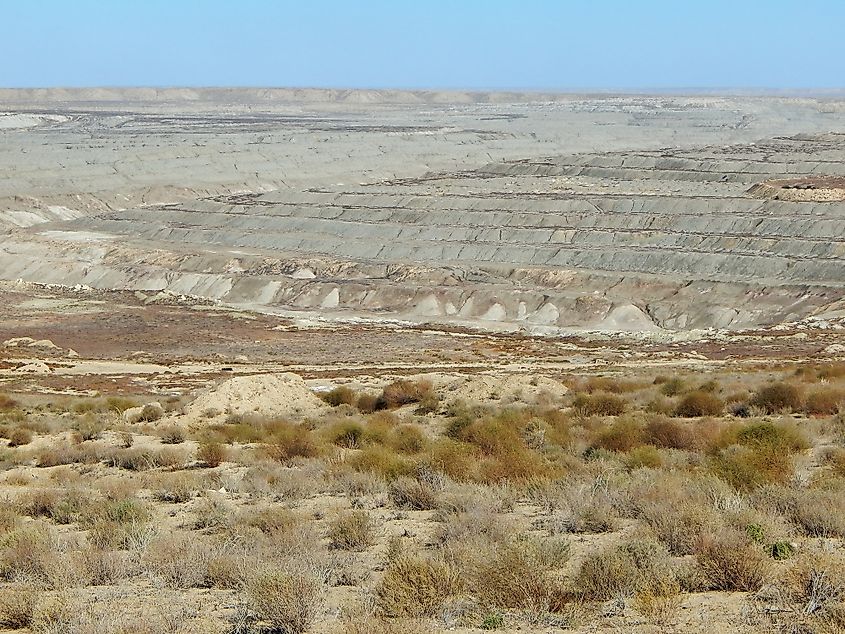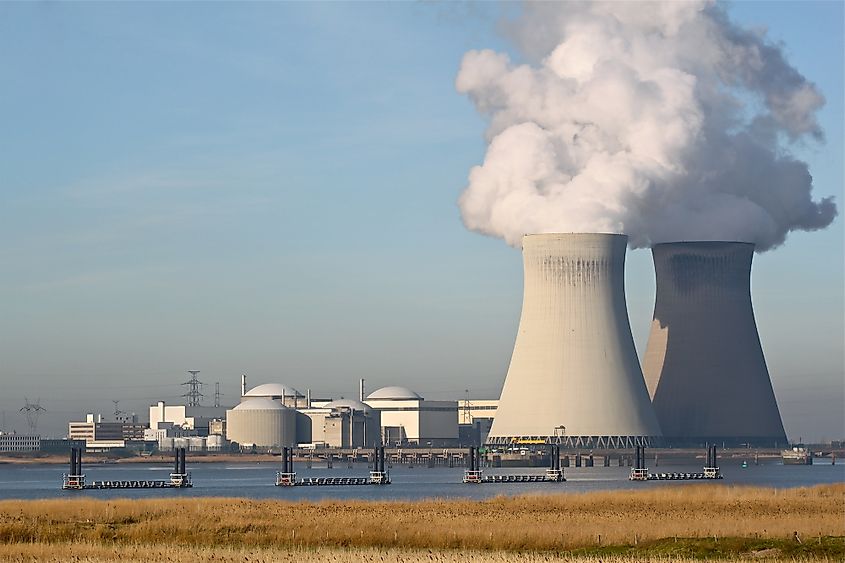The 10 Biggest Uranium Reserves In The World

Highly reactive in energy-creating processes, uranium is far more common than silver and gold, and may prove to be far more practical than any ‘precious’ mineral in meeting the long-term needs of our planet’s human population. For our usage herein, ‘Uranium reserves’ are reserves of ‘recoverable’ uranium, regardless of isotope, on the basis of a fixed market price. Nuclear power capacity is said to have rose to about 372.5 gigawatts worldwide in 2012, with 437 active nuclear power reactors across 31 countries. Although countries like Japan and Germany have worked to shut down all of their reactors completely out of public outcry over safety and environmental concerns, others, like India, China, Russia and Saudi Arabia, have contrarily opened new nuclear reactors to help satisfy their energy demands. Considering that nuclear power plants are typically fueled by uranium, countries that have high reserves of uranium will be able to benefit from the ever-increasing share of the nuclear energy sector within the global energy market. So, then, we are left to ask: just which countries have the highest reserves of uranium? Here is the answer:
Countries With Biggest Uranium Reserves
1. Kazakhstan

In 2018, Kazakhstan had the biggest uranium reserve in the world with 304,000 metric tons. It is also the world's largest uranium producer. Over 12% of the world's uranium reserves are in Kazakhstan. It must be noted here that Kazakhstan has long been among the world’s largest producers of uranium. In 2009, for instance, it produced nearly 28% of the global total. In 2013, statistics show that it produced 22,451 tonnes of uranium, which accounted for about 38% of the world’s total production in 2013. However, much of its uranium was exported by Kazatomprom – the state-owned company that manages all of the country’s major uranium activities: mining, exploration, imports, and exports included. The company holds strategic alliances with major energy-consuming countries like China, Japan, and Russia, and holds a significant share in the international nuclear giant Westinghouse Electric Company. Uranium exploration began in the country in 1943. Currently, Kazakhstan has about 50 deposits in 6 provinces.
2. Canada
Canada was the world's largest uranium producer for many years, accounting for 22% of world output at the time, but in 2009 was overtaken by Kazakhstan. For the record, the McArthur River Mine in Canada is said to be the most productive uranium-producing mine in the world. As statistics prove, Canada produced nearly 9,331 tonnes of uranium in 2013. In 2018, its production increased to 275, 000 metric tons. Most of the country’s reserves are found in the Athabasca Basin of Northern Saskatchewan, with Canada’s deposits known to have been graded 10 to 100 times greater than the average grade of deposits mined in different parts of the world.
3. South Africa
With energy production on the rise in the country, South Africa has two nuclear reactors that produce 5 percent of the country’s electricity. It has the world's third largest amount of uranium reserves. A state-owned power utility company, Eskom, owns South Africa’s Koeberg Nuclear Plant. The country’s most important mining sites are found at the Dominion Reefs project at Haartebeesfontein, Ezulwini near Dominion Reefs, and the central Karoo Basin, which is owned by UraMin, Inc. UraMin operates across much of the African continent, and is a subsidiary of the French nuclear energy company Areva.
Could Uranium Power Our Future?
As we have seen from the BGR’s statistics, uranium availability is not like many other natural resources. Instead of being fairly specific to certain regions of the world, it appears to be more erratically dispersed globally than, say, fossil fuels. Luckily for many of the developing countries with large uranium stores, they may have hit the mineral jackpot when it comes to prospects for nuclear energy development. Indeed, apart from the ‘recoverable’ reserves listed, the world may have much more uranium to proffer yet still. As new means of more efficient uranium recovery are developed, and new areas are explored for uranium ore, uranium-powered reactors may prove to be a massive contributor to world energy.

As the long-term availability of fossil fuels and the long-term effects of their consumption on climate change become increasingly pertinent issues to troubleshoot, uranium may very well prove to be a possible means to wean ourselves off of energy sourced from the burning of fossil fuels and other hydrocarbons. Nuclear energy, however, does not come without its risks, as the storage of used supplies and the impending danger of reactor meltdown is never far from peoples’ minds. Indeed, finding safe and feasible means to extract, process, dispose of, and turn uranium into electrical power for a population that is stretching the earth’s resources to their limits may be among the next great frontiers of humanity.
Largest Uranium Reserves In The World
| Rank | Country | Uranium Reserve (in 1000 metric tons) |
|---|---|---|
| 1 | Kazakhstan | 304 |
| 2 | Canada | 275 |
| 3 | South Africa | 168 |
| 4 | Brazil | 156 |
| 5 | China | 102 |
| 6 | Mongolia | 50 |
| 7 | Ukraine | 41 |
| 8 | Tanzania | 38 |
| 9 | Uzbekistan | 37 |
| 10 | Russia | 25 |











